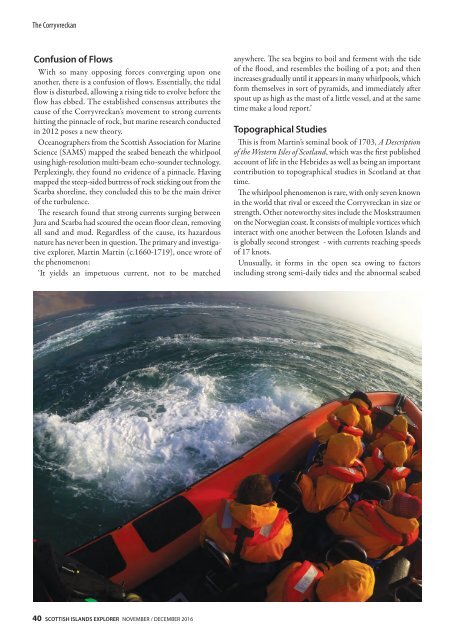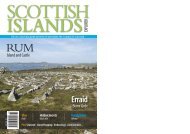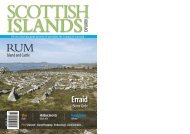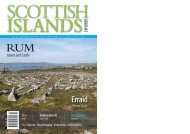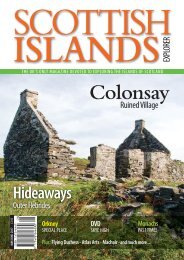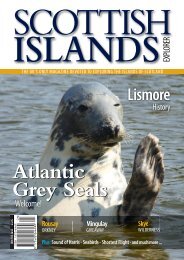Create successful ePaper yourself
Turn your PDF publications into a flip-book with our unique Google optimized e-Paper software.
The Corryvreckan<br />
Confusion of Flows<br />
With so many opposing forces converging upon one<br />
another, there is a confusion of flows. Essentially, the tidal<br />
flow is disturbed, allowing a rising tide to evolve before the<br />
flow has ebbed. The established consensus attributes the<br />
cause of the Corryvreckan’s movement to strong currents<br />
hitting the pinnacle of rock, but marine research conducted<br />
in 2012 poses a new theory.<br />
Oceanographers from the <strong>Scottish</strong> Association for Marine<br />
Science (SAMS) mapped the seabed beneath the whirlpool<br />
using high-resolution multi-beam echo-sounder technology.<br />
Perplexingly, they found no evidence of a pinnacle. Having<br />
mapped the steep-sided buttress of rock sticking out from the<br />
Scarba shoreline, they concluded this to be the main driver<br />
of the turbulence.<br />
e research found that strong currents surging between<br />
Jura and Scarba had scoured the ocean floor clean, removing<br />
all sand and mud. Regardless of the cause, its hazardous<br />
nature has never been in question. e primary and investigative<br />
explorer, Martin Martin (c.1660-1719), once wrote of<br />
the phenomenon:<br />
‘It yields an impetuous current, not to be matched<br />
anywhere. e sea begins to boil and ferment with the tide<br />
of the flood, and resembles the boiling of a pot; and then<br />
increases gradually until it appears in many whirlpools, which<br />
form themselves in sort of pyramids, and immediately aer<br />
spout up as high as the mast of a little vessel, and at the same<br />
time make a loud report.’<br />
Topographical Studies<br />
is is from Martin’s seminal book of 1703, A Description<br />
of the Western Isles of Scotland, which was the first published<br />
account of life in the Hebrides as well as being an important<br />
contribution to topographical studies in Scotland at that<br />
time.<br />
e whirlpool phenomenon is rare, with only seven known<br />
in the world that rival or exceed the Corryvreckan in size or<br />
strength. Other noteworthy sites include the Moskstraumen<br />
on the Norwegian coast. It consists of multiple vortices which<br />
interact with one another between the Lofoten <strong>Islands</strong> and<br />
is globally second strongest - with currents reaching speeds<br />
of 17 knots.<br />
Unusually, it forms in the open sea owing to factors<br />
including strong semi-daily tides and the abnormal seabed<br />
<strong>40</strong> SCOTTISH ISLANDS EXPLORER NOVEMBER / DECEMBER <strong>2016</strong>


